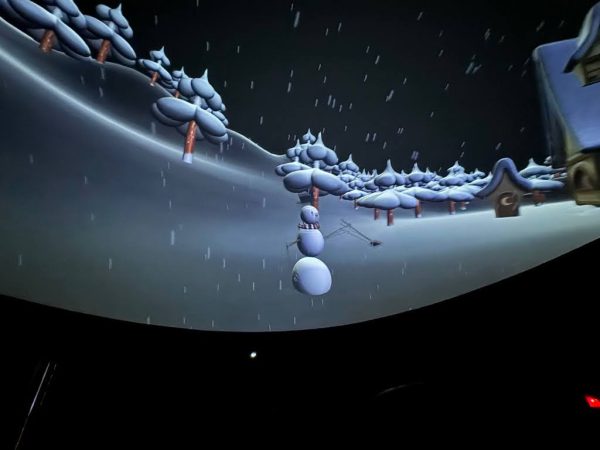“Far Away:” Strikingly Short and Poignant
On Sunday, April 7, the Colgate Department of Theater presented the final showing of the 2000 Caryl Churchill play, “Far Away,” directed by Simona Giurgea. The cast was made up entirely of Colgate students, and the impressively simple yet striking set was constructed by students as well. With only three main characters and a small ensemble, this play still managed to create a whole new world on stage.
“Far Away” requires your full attention, as there is a lot of meaning that can be derived from the short lines delivered by the actors and the movements of the ensemble in the background. The performance will leave you pondering its meaning for hours, as realizations about the subtext and implied messages roll in even after the show ends.
“[The show was] really well done. I liked how the scarce detail left a lot about the setting up to the imagination,” sophomore Caroline Simon said.
The curtain opens to a quiet scene where Joan, a young girl visiting her aunt and uncle, has trouble sleeping due to some disturbing events she had observed in the yard. Her aunt reassures her that when she saw her uncle beating several people in the shed in the yard, he was doing a good thing by punishing traitors and rescuing the rest. Joan, comforted by this apparently satisfactory divide between good and evil, goes to sleep.
The rest of the play follows a similar motif of senseless violence that is either justified or completely ignored. In the next scene, the young girl is now an adult working in a hat factory, where her only concern is corruption in the upper levels of management of the factory, not the fact that the complex hats she and her co-workers have been designing are being used for a much darker and violent purpose.
Although this play is only 50 minutes long, the skill of the actors and the accompanying set design and sound truly manage to pack in an eerie image of what our world may be moving toward.
“This was a very unique play in that you had to pay close attention because the scenes were very detailed and seemed to have a greater meaning behind them,” sophomore Lauryn Poyser said.
The short play ends with a picture of a dystopian future of violence in a world where human evil has spread to nature and household items, and indifference to human suffering prevails. Joan is speaking to her husband, and absentmindedly mentions the horrific violence she has committed to get to him and the inanimate objects and animals that have apparently “picked sides” in the ongoing war as nature turns on itself. Although it may be hard to imagine the militarization of a river or a cat, it is strikingly clear that this seemingly dystopian world is actually not far from the one we are beginning to see now, which begs the question: Are we really “Far Away” from this world of senseless violence and disregard for human life, or are we already nearly there?
Contact Sasha Balasanov at [email protected].









